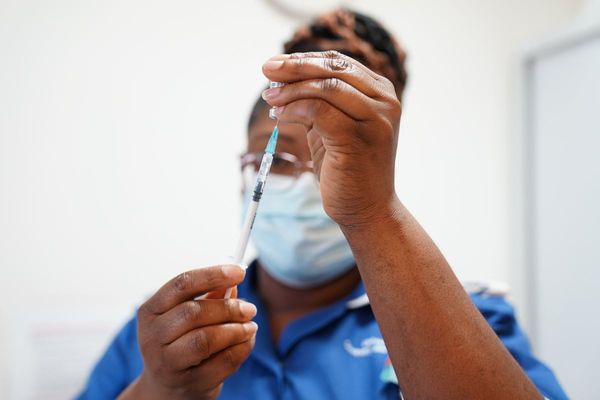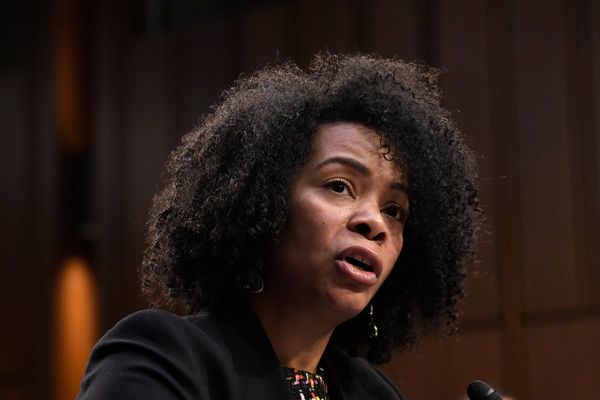
Orcas, or killer whales, are apex predators, best known for their ferocious hunting techniques. So when a female was seen apparently caring for the offspring of another species, it came as a bit of a surprise. “I saw straight away there was something weird about it,” says Marie-Thérèse Mrusczok, who was working as a spotter on the Láki Tours whale-watching boat that witnessed the encounter.
The ship’s crew initially thought it was a very small killer whale calf swimming alongside the orca, but photos later confirmed what Mrusczok suspected – that the female, called Sædís, appeared to be looking after a newborn long-finned pilot whale.
The unique sighting happened near Snæfellsnes, west Iceland, in August 2021, and is now the subject of a research paper published in the Canadian Journal of Zoology. “It’s another level of empathy we see in these animals if they are capable of caring for another species,” says Mrusczok, who is president of conservation nonprofit Orca Guardians Iceland and a researcher at the West Iceland Nature Research Centre.

The question researchers have been unable to answer is whether the calf was adopted after being orphaned or abandoned, or whether Sædís stole the calf from its parents. “There are many possibilities … but what we can say for sure is that the female showed protective behaviour towards the pilot whale calf,” Mrusczok says.
The newborn was seen swimming in the “drafting” position next to the orca, which means it was getting dragged along by her and needed less energy for swimming. It is not known if the attraction from the calf was mutual, or how long their association went on for.
The pair were seen swimming together for 21 minutes, and were accompanied by two other adults – a female named Dragonfly and a male called Zale who are often together as a group. Dragonfly and Zale tolerated the calf, but it is not known if, or how, they interacted with it directly.

Orcas and pilot whales have similar social structures, forming strong, long-term bonds between mother and offspring, so researchers believe that caregiving between the species could be a possibility. Although the calf was emaciated, it did appear that it was being cared for by the orca.
Sædís has never had her own offspring over the nine years researchers have been following her, and so it is unlikely she was producing any milk that would have sustained the calf.
One theory is that the orca may have had a miscarriage or lost a newborn just before this encounter, and could have been looking after the pilot whale calf as a substitute, although there is no evidence to support this.
Groups of killer whales and pilot whales are known to chase and antagonise each other. Researchers believe they do this because they are competing over resources – in Iceland, probably Atlantic herring or mackerel.
In 2022, researchers saw something else they had not observed before: pilot whales coming back after being chased away. They did this three times. The researchers wrote in the paper: “It is possible that the movements of the killer whale group as a whole could have been influenced by an active effort of SN0540 [Sædís] to obtain another pilot whale calf.”
Rob Lott from Whale and Dolphin Conservation, who was not involved in the research, says: “These creatures spend the majority of their lives underwater out of view and often far out at sea, so maybe this extraordinary encounter isn’t that unusual. But what is exciting is that it’s the first time it has been documented.
“If it was an abduction or kidnap, this may go some way in explaining why long-finned pilot whales are often seen chasing pods of orcas away.”
Although this is the first time this behaviour, called interspecific alloparenting, has been observed in orcas, it has been seen in other cetacean species. Short-beaked common dolphins, common bottlenoses, Indian Ocean humpbacks and Indo-Pacific humpbacks have all been observed looking after the young of other species.
Mrusczok says: “Anything is possible – watching orcas has taught me I never know what’s happening. There is always mystery, there is always more to find out.”
Sædís was again spotted interacting with long-finned pilot whales in 2022, but the calf was no longer with her, and it is presumed to have died.
Find more age of extinction coverage here, and follow biodiversity reporters Phoebe Weston and Patrick Greenfield on Twitter for all the latest news and features







